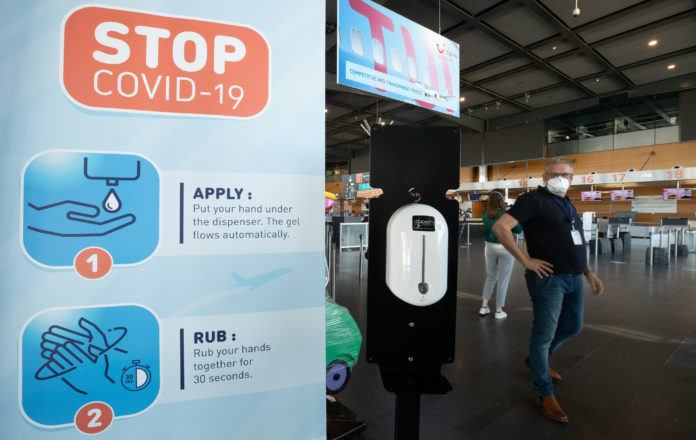The 27 Member States of the European Union will start using the same criteria to determine the colour codes and possible travel restrictions for other countries and regions in the EU, the Council decided on Tuesday.
Up until now, it was up to the Member States to decide what colour they assigned certain travel zones in other countries, leading to confusion for travellers because of constantly changing travel restrictions and quarantine rules.
In a statement yesterday, European Commission President Ursula von der Leyen said that the travel restrictions introduced by the Member States had led to a "patchwork of measures."
With the coordinated approach, Member States will now provide the European Centre for Disease Control (ECDC) with data about the coronavirus on their territory every week, after which the organisation will publish a uniform colour-coded map of the EU.
European Commissioner Didier Reynders, who already proposed a way to impose uniform travel restrictions at the beginning of September, said on Flemish radio that this is a recommendation, not a binding law, but that he expects all Member States to stick to it.
Related News
- More than 7,000 Covid-19 tests carried out at Brussels Airport
- How Belgium's new quarantine rules work
- Uniform travel restrictions across EU could be introduced next week
The ECDC will assign colours to countries and regions based on the number of new cases per 100,000 inhabitants over the last 14 days (14-day cumulative coronavirus case notification rate), the number of tests per 100,000 inhabitants carried out in the last week, and the percentage of positive tests carried out in the last week (positivity rate).
Green:
If the number of new confirmed infections in the last 14 days is below 25 per 100,000 inhabitants, and the test positivity rate is below 4%.
Orange:
If the number of new confirmed infections in the last 14 days is below 50 per 100,000 inhabitants, but the test positivity rate is 4% or above.
If the number of new confirmed infections in the last 14 days is between 25 and 150 per 100,000, but the test positivity rate is below 4%.
Red:
If the number of new confirmed infections in the last 14 days is 50 or more per 100,000 inhabitants, and the percentage of positive tests is 4% or above.
If the number of new confirmed infections in the last 14 days is higher than 150 per 100,000 inhabitants.
Grey:
If there is insufficient data, or if the testing rate is lower than 300 per 100,000 inhabitants.
Until now, countries have been reluctant to agree to these uniform arrangements and restrictions, as the number of tests that are carried out varies from country to country.
No coordinated arrangements have been made about restrictions for travellers going to or returning from a red or orange zones, but the Member States should "act in a proportionate manner," according to the Council's recommendation.
Each state is free to decide what restrictions it imposes, but they "should in principle not refuse entry to persons travelling from other member states."
Requiring a test upon return from a non-green zone, imposing a quarantine, or a combination of both remains a possibility. However, no restrictions on the free movement of people travelling to or from green areas should be imposed.
Any measures that restrict the free movement have to be "proportionate" and "non-discriminatory," and have to be lifted as soon as the epidemiological situation allows, according to the Council.
Additionally, Member States that want to introduce new travel restrictions have to inform the affected countries at least 48 hours in advance. Citizens have to be informed at least 24 hours before the new measures take effect.
All information about travelling in the EU will be available on the Reopen EU platform, where also the single colour map will be published and updated once a week. The first map is expected to be uploaded in the next days.
On 13 October, the Commission welcomed the Council agreement to bring more order to a currently confusing situation. "The coming together of Member States sends a strong signal to citizens and is a clear example of the EU acting where it absolutely should. We have learned our lessons: we will not surmount the crisis by unilaterally closing borders, but by working together."
According to a Commission official, the differences in travel restrictions undermined the credibility of the Commission and caused disruption in the EU. It took a longer time than expected for the Council to adopt the Commission proposal. While maintaining the main elements of the Commission proposal, the Council decision stops short of harmonisation of travel restrictions.
The most important outcome is a single map with common colour codes based on common criteria, produced by the ECDC. Member States can still decide what restrictive measures they apply such as quarantines or tests. Their risk assessments differ and they will also be able to apply restrictions in orange zones (see below).
The Commission will monitor how the new system will work in practice. Member States that have put in place travel restriction that run against the principles in the Council decision are expected to adapt them in the coming days.
Maïthé Chini
The Brussels Times

